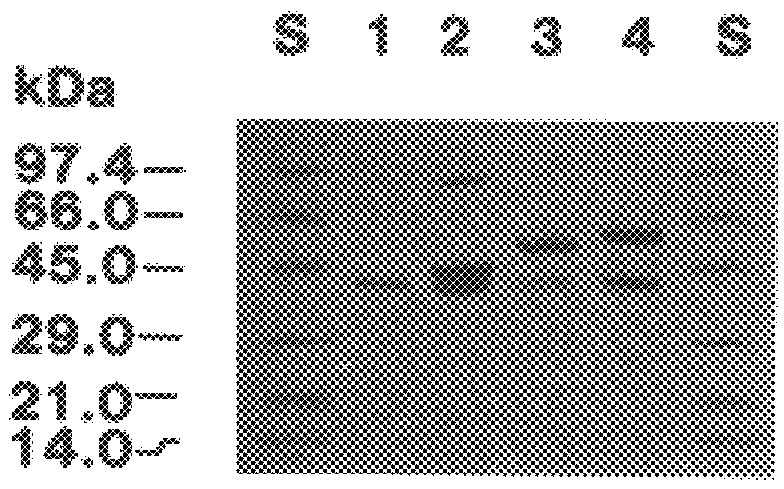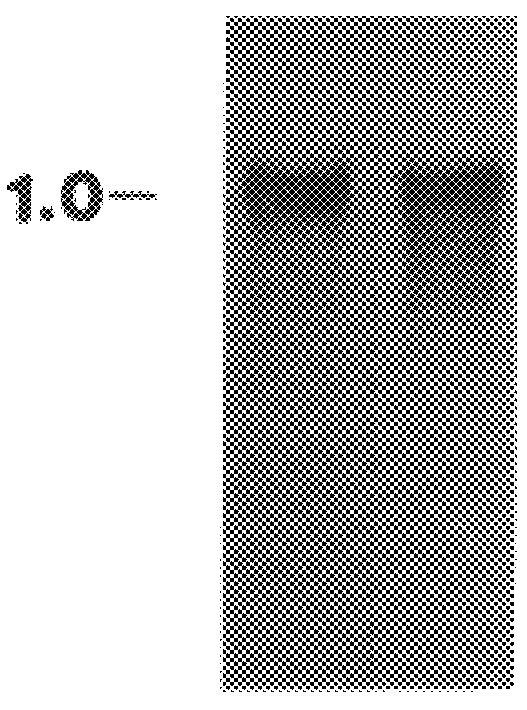cDNA encoding a polypeptide including a hev ein sequence
a polypeptide and cdna technology, applied in the field of cdna encoding a novel polypeptide, can solve the problem of completely destroying the activity of chitinas
- Summary
- Abstract
- Description
- Claims
- Application Information
AI Technical Summary
Problems solved by technology
Method used
Image
Examples
Embodiment Construction
The present invention relates to a cDNA clone, referred to as HEV1, as carried in E. coli ATCC 68363 which encodes a protein.
Further, the present invention relates to a method for the binding to chitin of an amount of a compound selected from the group consisting of a peptide having a sequence of 204 amino acids as shown in FIGS. 2A and 2B and subfragments of the peptide which binds the chitin.
Further, the present invention relates to a method for the reversible binding on chitin of fusion proteins containing the 43 amino acids of the hevein peptide. The method is demonstrated using an N-terminal HEV1-MBP fusion protein and can be used for fusion protein purification purposes.
Also the present invention relates to a method for detecting the presence of hevein peptide sequence in plant material, which comprises: providing a selected part of the plant material for detection; isolating RNA from the plant material; and probing the RNA with a cDNA so that the RNA binds to the cDNA when th...
PUM
| Property | Measurement | Unit |
|---|---|---|
| Current | aaaaa | aaaaa |
| Digital information | aaaaa | aaaaa |
Abstract
Description
Claims
Application Information
 Login to View More
Login to View More - R&D
- Intellectual Property
- Life Sciences
- Materials
- Tech Scout
- Unparalleled Data Quality
- Higher Quality Content
- 60% Fewer Hallucinations
Browse by: Latest US Patents, China's latest patents, Technical Efficacy Thesaurus, Application Domain, Technology Topic, Popular Technical Reports.
© 2025 PatSnap. All rights reserved.Legal|Privacy policy|Modern Slavery Act Transparency Statement|Sitemap|About US| Contact US: help@patsnap.com



